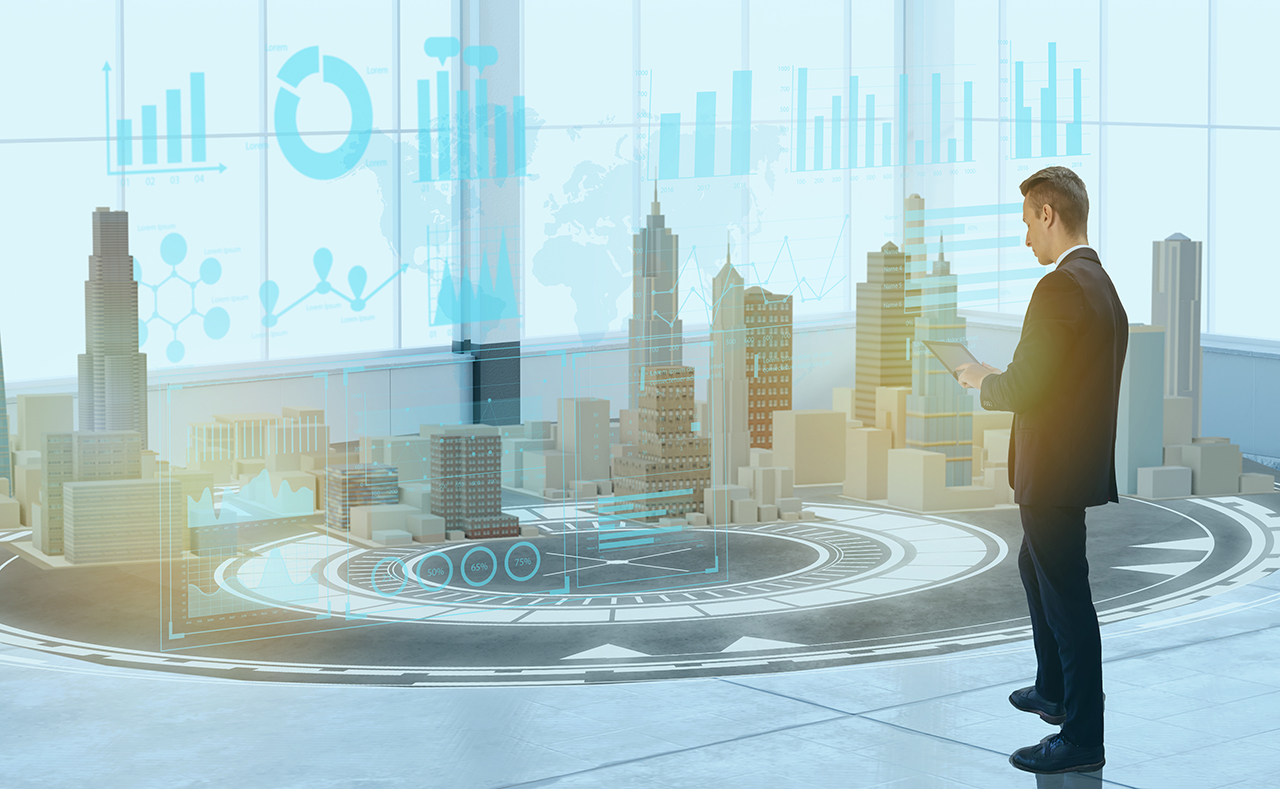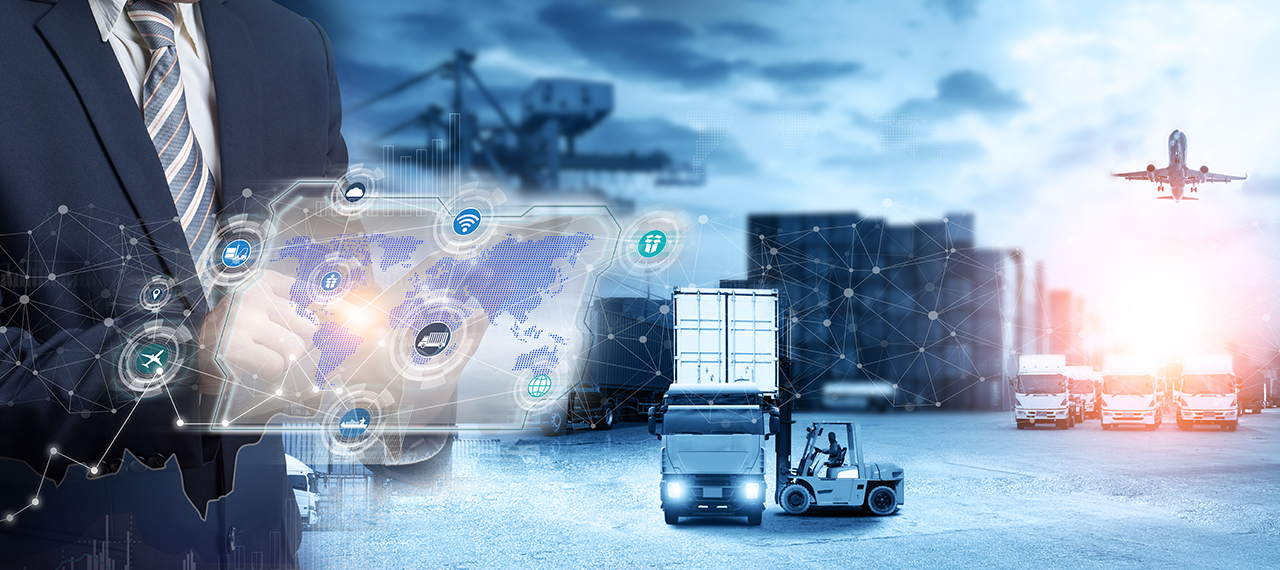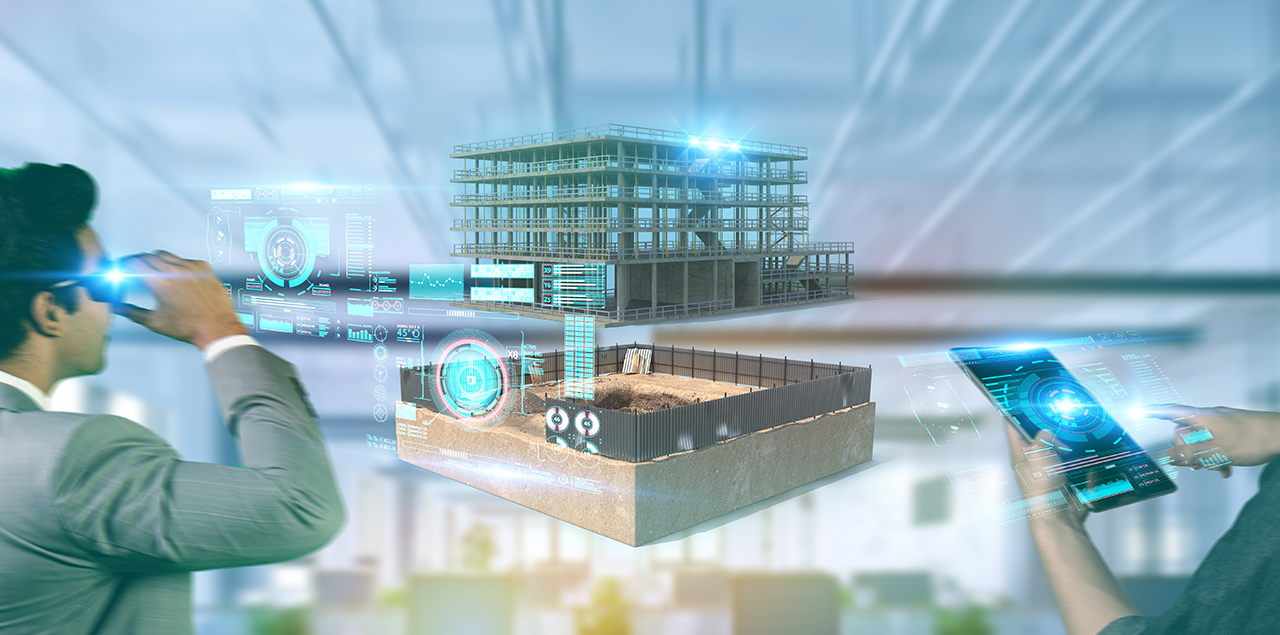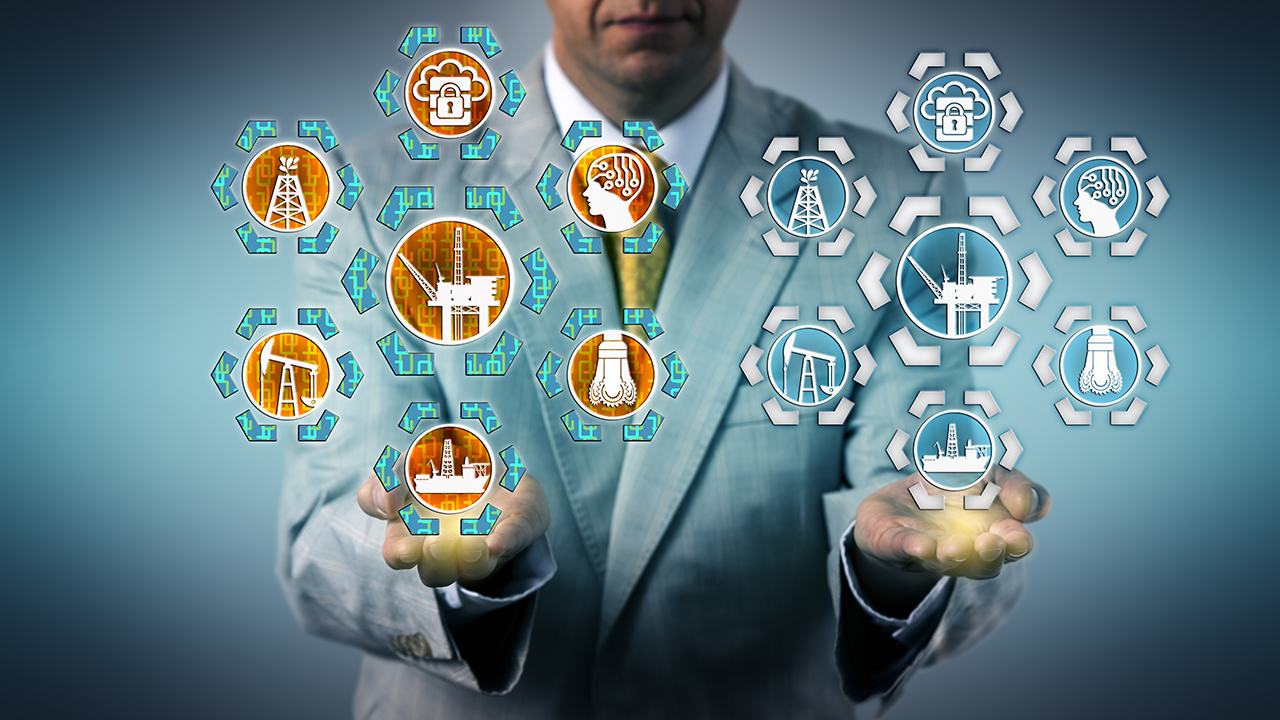There are many great digital twin examples within manufacturing, supply chain, construction and other industries as companies embrace IoT and cloud technologies and seek to optimize the effectiveness of their deployments. In fact, other industries such as oil and gas and retail have created innovative digital twin applications as well.
With many industries undergoing digital transformation, and technologies such as AI and machine learning, as well as 5G networks, fueling virtual reality trends in commercial operations, we’re seeing some exciting new digital twin use cases.
In this article, we will define digital twins in more depth, examine different use cases and applications for digital twins and explore digital twin examples in key industries. Continue reading to learn how these examples of digital twins shape their industries.

The term “digital twin” is a simple way to describe a virtual, real-time model of an existing physical device or process that exists in the real world. For a more in-depth definition of a digital twin, check out our companion blog post on this topic. Essentially, creating a virtual model of complex real-world systems enables developers, planners, and other stakeholders to visualize those systems, assess their viability, perform tests, and adjust the construction of the real-world versions - potentially saving time and expense and even thwarting failures.
Dr. Michael Grieves at the University of Michigan first used the term in 2002 to describe a software concept applied to manufacturing. But NASA has been practicing the digital twin concept since its 1960s space missions. Its flight crew personnel created exact digital replicas to test spacecraft performance.
Continue reading to learn more about how digital twins work and the value they provide in today's IoT systems.
Digital Twin Manufacturing Examples

What is a digital twin in manufacturing and why is it important? The power of digital twins in manufacturing lies in the ability to capture real-time IoT data from all existing systems and optimize performance quickly using AI and data analytics. With these software-based models in place, manufacturers can track processes and machines in real-time and act on predicted failures before they occur. Many market-leading companies enjoy the benefits of digital twins in manufacturing.
Manufacturing Digital Twin Examples
The following examples show how important digital twin technology is to the manufacturing industry.
Vehicle design — According to Renault, the car company uses advanced computing technology, digital simulation, AI and cloud technology to build a complete virtual prototype of its vehicle models. This digital twin in manufacturing example follows the prototype through manufacturing and beyond. It allows engineers to test, alter and interact with the virtual vehicle to make design changes before building a prototype. Everything from handling, aerodynamics, engine settings and autonomous driving gets tested in the twin. In a simulator, drivers even take the model on virtual road tests. Then, the twin also includes manufacturing requirements to optimize production. Throughout the car’s life, the real-world vehicle and the digital twin continually learn from each other even after purchase. In this way, the cloud enables real-time updates and retrofitting.
Factory planning — Electrolux, a global manufacturer of household and commercial kitchen appliances, plans to create eleven digital manufacturing sites around the world. They eventually plan to create a digital twin for all manufacturing sites. The virtual layout of the factory will simulate material flow to optimize capacity and efficiency. Already, the pilot projects have saved $2 million by optimizing flows.
Digital Twin Supply Chain Examples

During the pandemic, many organizations found out how limited spreadsheets become during disruptions. A digital twin allows organizations to simulate how their supply chain design holds up to different supply and demand shocks. A supply chain digital twin is a great way to ensure supply chain resiliency. After all, there will certainly be new supply chain shocks that threaten to disrupt everything from supply shortages to transportation backlogs.
Digital Twin Use Cases in Supply Chain
Military transport — US Transcom transports military equipment and troops all over the world. They deployed a digital twin solution to replace spreadsheets because they needed to reduce millions in costs. They mapped different logistics flows and ended up removing $2 billion in costs by identifying different flow paths and order patterns. These massive results show how a digital supply chain twin solution improves a company’s bottom line.
Supermarkets — Another digital twin in supply chain examples includes a French supermarket chain. Intermarché created a digital twin of a brick-and-mortar store by obtaining data from its IoT-enabled shelves and sales systems. With all this data, store managers can test different floor layouts and inventory flows.
Warehouse management — Between chronic worker shortages and increased consumer expectations, managing a warehouse operation requires agility. That’s where a supply chain digital twin can help. It can provide a baseline operating visualization in real time to map high-activity areas and improve flows of people and assets. A digital twin for supply chain models allows users to create “what-if” scenarios without disrupting operations.
Digital Twin Construction Examples

Quality assurance and quality control — Quality assurance is always an important part of a construction project. Bentley BIM Modeling services uses a construction digital twin from point cloud data that creates a detailed 3D building information model. With this construction digital twin, managers can perform quality assurance and quality control checks and even identify discrepancies between different systems like electrical or plumbing.
3D printing — In Amsterdam, a 12-meter bridge made of steel that crosses the Oudezijds Achterburgwal canal is the first pedestrian bridge to be entirely 3D printed and it has its own digital twin. This construction digital twin utilizes a network of sensors all along the bridge to collect data that is then used to build the twin. Engineers use the construction digital twin to analyze the performance of the structure during everyday use. This is a great example of the benefits of a digital twin in construction.
Progress tracking — According to an Autodesk report, 35 percent of construction professionals do non-productive work, such as communicating project information, resolving conflicts, and dealing with mistakes. Many also feel their time could be spent more productively. With digital twin technology in construction, teams can experience enhances visibility across the project lifecycle.
Other Digital Twin Examples

Digital twin oil and gas examples — A digital twin in the oil and gas industry can help streamline operations and reduce costs by simulating in real-time physical assets such as a refinery, offshore platforms or power plants. As a result, it gets easier to predict operational issues that lead to costly downtime. Digital twin technology in oil and gas also allows companies to understand how environmental changes and market conditions affect their energy production.
Water utilities — A Portuguese utility organization, Aguas do Porto, supplies water to the city of Porto. The utility gathered data from sensors and telemetry along with data such as billing, assets, accounting and customer service to build a digital twin of the water supply ecosystem in real-time. They’ve used the supply chain digital twin to forecast water consumption, water quality issues and even flooding.
Smart cities — A smart city digital twin uses technologies such as sensors, mobile devices and other smart connected equipment to collect information from the built environment. The digital twin smart city works in real-time to connect data from vehicles, buildings, infrastructure and citizens. This allows public sectors to model outcomes from city systems to improve operations and services. Download the Digital Twin Technologies and Smart Cities PDF to get deeper insights into the research surrounding enabling technologies.
Sports stadiums — The Los Angeles’ Sofi Stadium where teams such as the LA Rams and LA Chargers play has its own digital twin. This digital twin collects data in real time from every area of the park’s operations. The digital twin implementation example allows everyone from event organizers to maintenance and janitorial services to use the model for their specific use cases.
Hospital operations — In the healthcare industry, hospital operations modeling is a great example of digital twin technology. Hospital administrators can improve efficiency and reduce costs by using digital twins to model staffing systems, inform capacity planning, simulate workflows, and even explore different care models.
Retail applications — Most of our examples have been in the commercial, manufacturing and industrial spaces, as Digi is primarily focused on these arenas. But there are many practical applications in the retail world, which are emerging markets for the developers and systems integrators we support with embedded systems. Examples include virtual try-on applications and product ordering, in which the consumer can virtually assemble a model (automotive being the primary example) in order to customize the product to their specifications.
How Digi Helps
As we’ve outlined in these digital twin examples, these virtual models can apply to almost any industry. They also dramatically improve operations while also reducing costs. No matter the industry, digital twins can transform an organization and help people make better decisions faster. But the foundation of any digital twin relies on reliable, robust sensors, networks and wireless communications technology.
That’s where Digi can help.
Digi has over 35 years of experience providing and deploying IoT connectivity solutions for almost every industry imaginable. So, when it comes to building your digital twin, we have the expertise and scalable cellular solutions you need to create a reliable communications backbone.
Your operations team will love our Digi Remote Manager® platform because it brings best-in-class device management into a centralized portal that helps teams rapidly track, deploy and send hardware updates wherever they’re located.
Finally, when you need design expertise, tap into Digi’s dedicated Wireless Design Services team as you form the foundation of your digital twin. This team of experts specializes in designing the embedded systems your digital twin requires — embedded technologies with our wireless communication modules and SOMs.
Let us help you build a digital twin that will transform your operations.
Next Steps